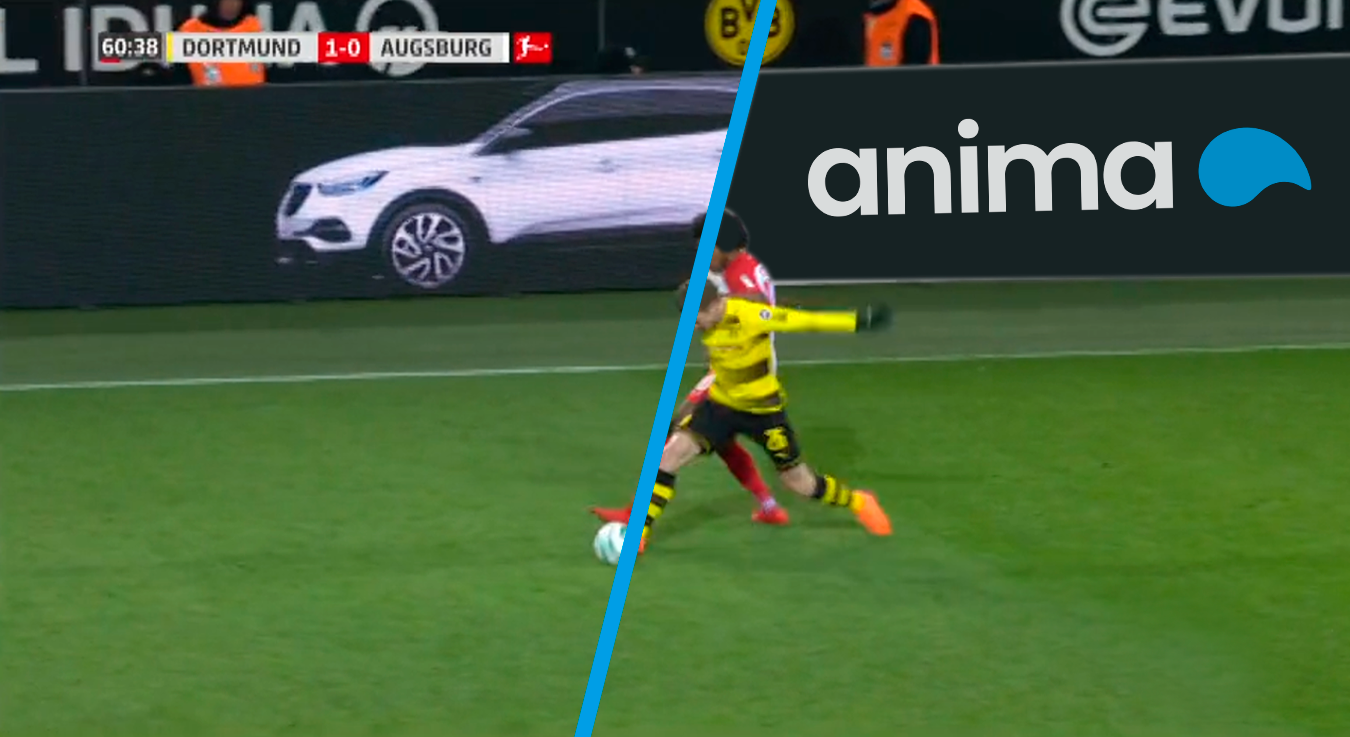

July, 2024
UEFA Euro 2024 has introduced a surprising innovation in the field of sports advertising: virtual perimeter advertising. For the first time, television viewers are seeing different ads than those seen by attendees in the stadium, thanks to advanced artificial intelligence technologies.
This innovation not only maximizes the reach of sponsors but also transforms the visual experience of sports events on an international level.
What is Virtual Perimeter Advertising?
Virtual perimeter advertising is an innovative technology that uses artificial intelligence to overlay ads on the LED screens around the playing fields at sports events. These ads are specifically adapted for television broadcasts, allowing different content to be shown based on the target market, instead of showing the same ads to all viewers.
At the current UEFA Euro 2024, this technology allows customizing ads for different regions or audiences, thus increasing the relevance and effectiveness of advertising campaigns. Viewers in each country can see ads tailored to their regions and languages, while stadium attendees are shown international versions.
Technology Behind Virtual Perimeter Advertising
The technology used in virtual perimeter advertising at UEFA Euro 2024 involves advanced software that can integrate ads in real-time into television broadcasts, using augmented reality techniques to ensure that the ads appear natural and without noticeable interruptions to viewers.
This contrasts with previous solutions like parallel ads, which required special hardware in the form of LED panels and cameras configured to detect different transmission frequencies that could simultaneously emit different ads on the same screen, a solution already tested by Bayer Leverkusen in the 2023/24 Champions League season.
How Virtual Perimeter Advertising Works
As mentioned, through the use of artificial intelligence (AI) and augmented reality (AR), virtual perimeter advertising allows the overlay of ads on the LED screens around the playing fields, specifically adapting the content for television audiences in different markets. But how exactly does it work?
1. Overlay technology: virtual perimeter advertising uses advanced software to identify and track the LED screens in the stadiums during live broadcasts. This software can precisely insert ads onto the screens, replacing the original content with specific virtual ads that are only seen in the television broadcasts of different regions.
This process involves the use of AI algorithms that can detect the positions and movements of the LED screens and the players on the field, ensuring that the virtual ads integrate smoothly into the broadcast.
2. Augmented reality (AR): AR technology allows virtual ads to appear natural and in high resolution. These ads not only overlay the LED screens but can also dynamically adjust in real-time to maintain visual coherence with the stadium environment, which is crucial to avoid noticeable interruptions for viewers and maintain the quality of the viewing experience.
3. Centralized management and scalability: virtual perimeter advertising ads are controlled by a central system that can update and change the content in real-time for different markets. The software´s scalability allows its implementation in multiple stadiums without the need for specialized hardware, making it easier to adapt ads for diverse global audiences, increasing the effectiveness and reach of advertising campaigns while reducing costs.
Advantages of Virtual Perimeter Advertising
1. Personalization and reach: one of the main advantages of virtual perimeter advertising is the ability to customize ads for different markets, thereby increasing the relevance and effectiveness of advertising messages. This technology allows sponsors to target their campaigns more precisely, reaching specific audiences with tailored content.
2. Scalability: unlike hardware-based solutions, virtual perimeter advertising is entirely software-managed, facilitating its implementation in any stadium. This scalability is crucial for large events like UEFA Euro, where matches are broadcast globally.
3. Innovation and user experience: the incorporation of AI has enabled the projection of virtual ads to be almost imperceptible to viewers, enhancing the viewing experience without noticeable interruptions.
However, curious situations, such as the case of the Belgian player who momentarily disappeared behind the ads while retrieving a ball, or Antoine Griezmann´s injury, a French national team player, who collided with an LED screen at Düsseldorf Arena, have generated discussions and curiosity among fans.
4. Future implications: the successful implementation of virtual perimeter advertising at UEFA Euro 2024 could mark the beginning of a new era in sports advertising. The vast possibilities for personalization and the ability to adapt to different markets make this technology a powerful tool for sponsors. Additionally, its scalability and centralized management make it a viable option for other major sports events.

In conclusion:
Virtual perimeter advertising not only improves the effectiveness of advertising campaigns and the ability to adapt ads for different audiences, thus enhancing marketing effectiveness, but also enriches the viewer experience.
Although there is still room for improvement in terms of technical precision and user experience consistency, UEFA Euro 2024 has proven to be an ideal testing ground for this technology, and we will likely see its adoption in other significant sports events in the near future.